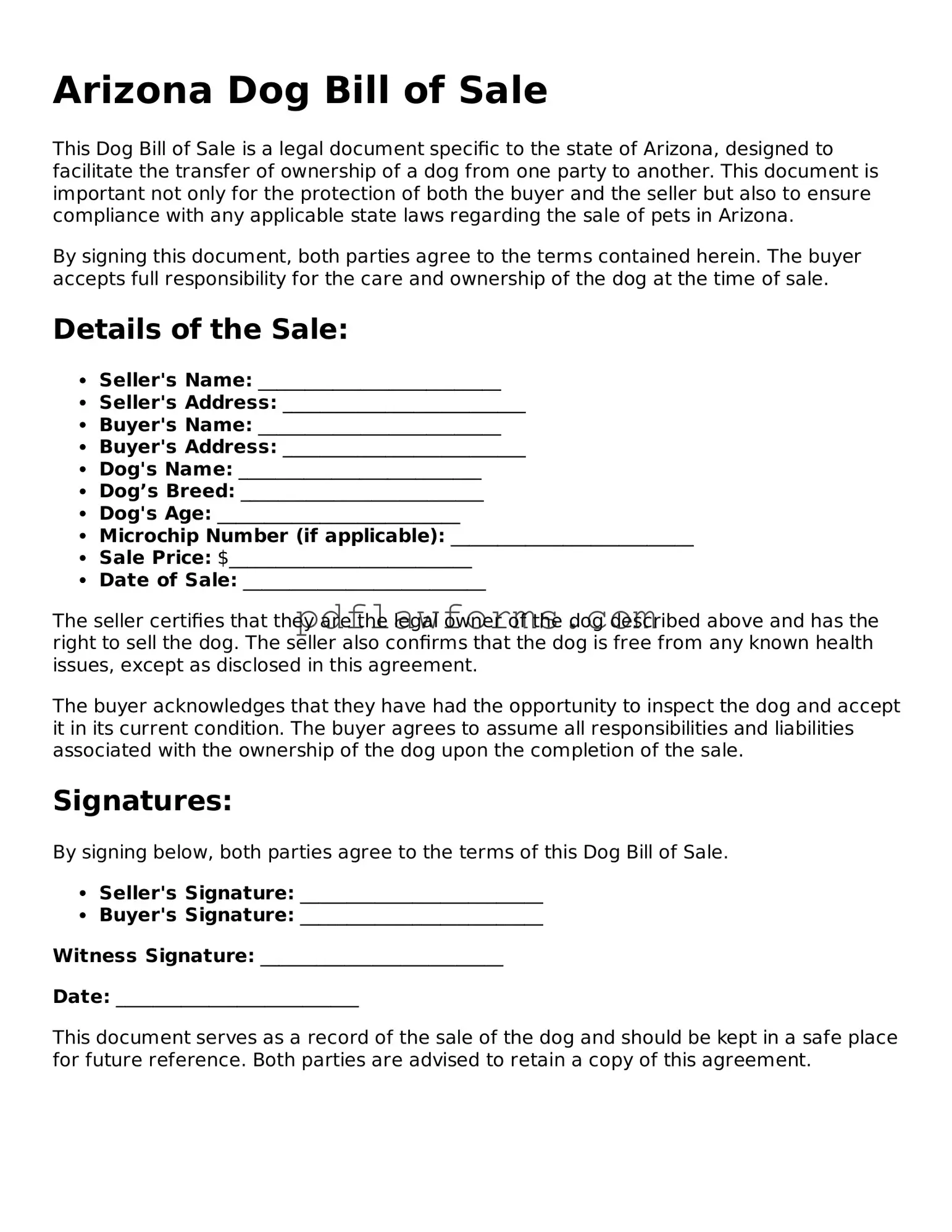When it comes to transferring ownership of a dog in Arizona, the Dog Bill of Sale form is an essential document. However, many people make mistakes when filling it out, which can lead to confusion or legal issues down the line. Understanding these common errors can help ensure a smooth transaction.
One frequent mistake is not including all required information. Buyers and sellers must provide details such as names, addresses, and contact information. Omitting any of this information can create problems later, especially if there are disputes regarding the sale.
Another common error involves failing to accurately describe the dog. It’s important to include details like breed, age, color, and any identifying features. A vague description can lead to misunderstandings about the dog’s identity, which can complicate ownership issues.
Some individuals neglect to specify the sale price. Leaving this blank may seem harmless, but it can create ambiguity regarding the transaction. Clearly stating the price helps establish a record of the sale and can be important for tax purposes.
People often forget to sign and date the form. A signature is a crucial part of any contract, and without it, the document may not hold up in a legal context. Both parties should ensure that they sign and date the form to validate the sale.
In addition, not providing a bill of health or vaccination records can be a significant oversight. Buyers appreciate having this information to ensure the dog is healthy and up-to-date on vaccinations. Including these records can foster trust and transparency between the buyer and seller.
Some sellers mistakenly believe that a verbal agreement is sufficient. However, relying solely on verbal promises can lead to misunderstandings. Having a written document protects both parties and clarifies the terms of the sale.
Another common mistake is not keeping a copy of the completed form. After the transaction is complete, both parties should retain a copy of the Dog Bill of Sale. This serves as proof of ownership transfer and can be helpful in case of future disputes.
Lastly, people sometimes overlook the importance of checking local regulations. Different municipalities may have specific requirements regarding dog ownership transfers. Familiarizing oneself with these regulations can prevent unexpected complications.
By being aware of these common mistakes, individuals can navigate the process of filling out the Arizona Dog Bill of Sale form more effectively. A little attention to detail can go a long way in ensuring a successful and hassle-free transaction.
